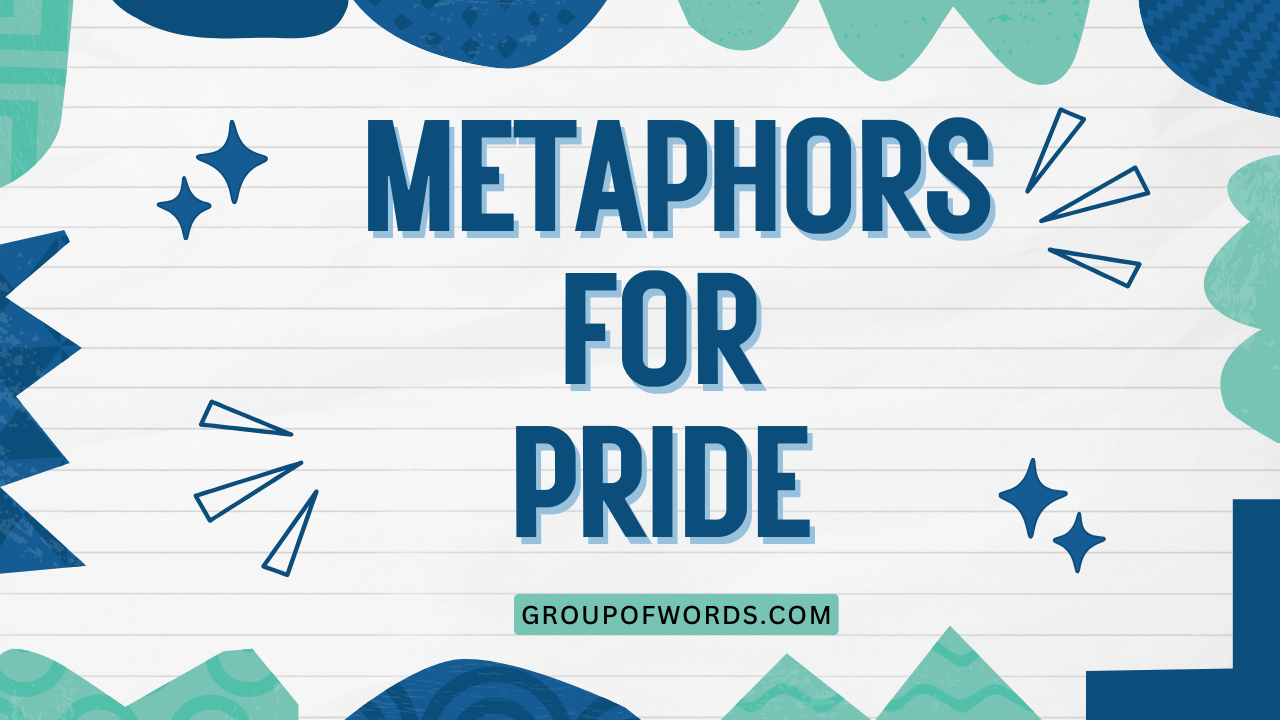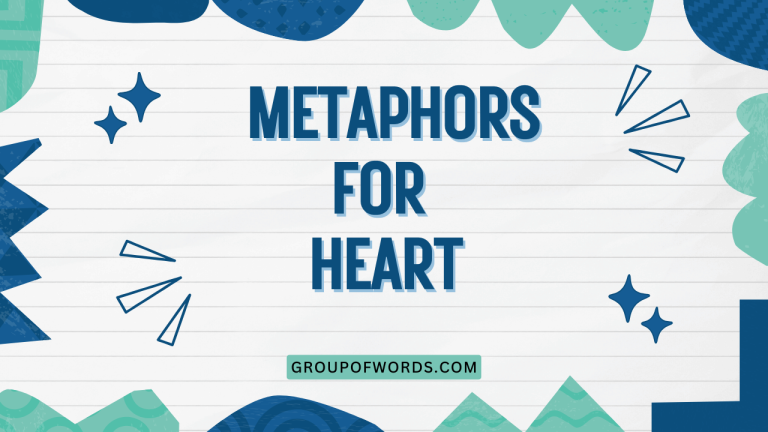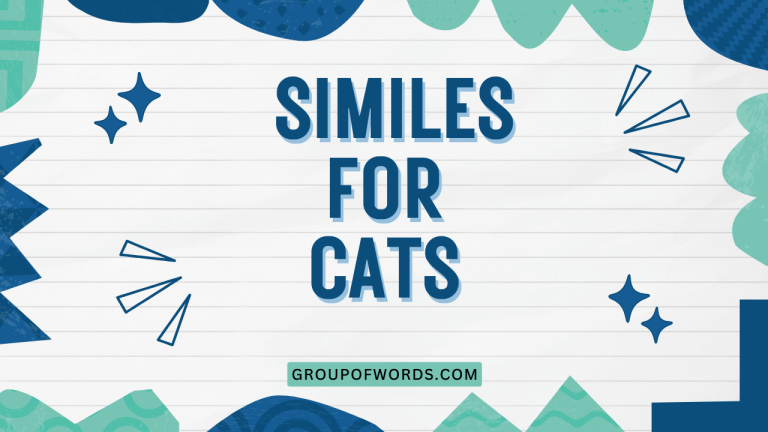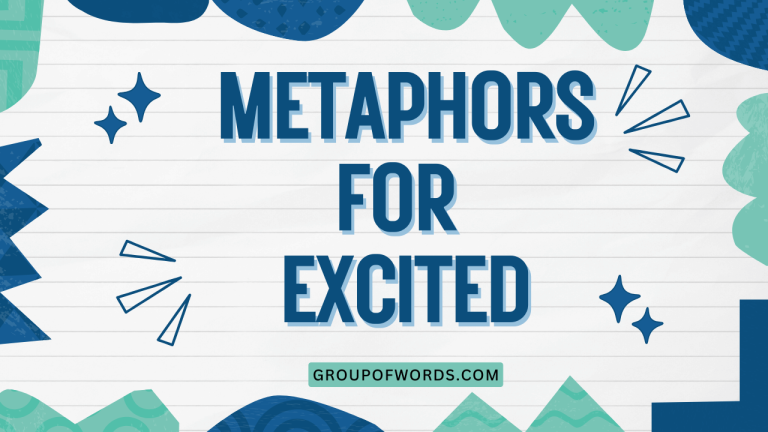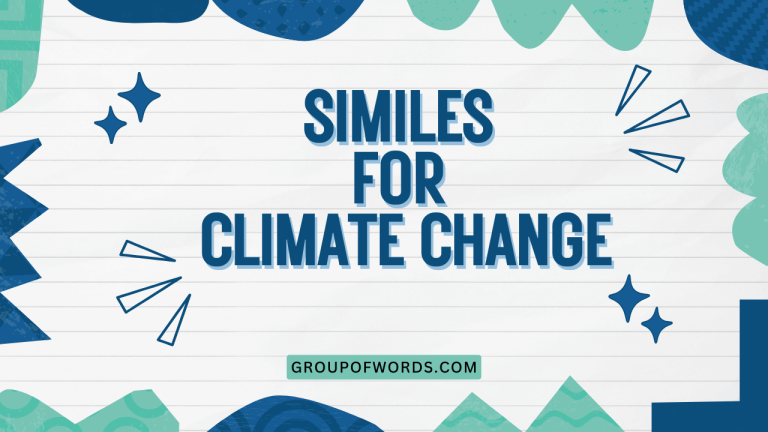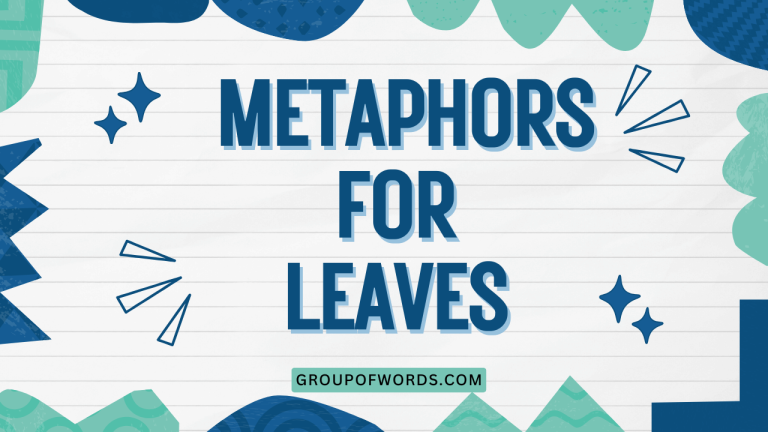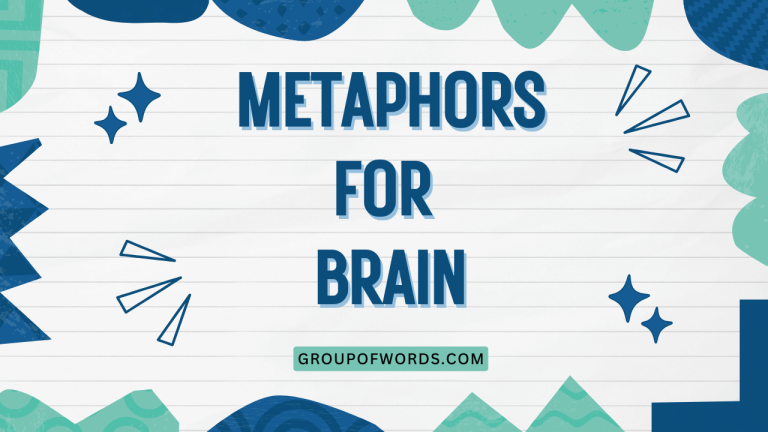Metaphors for Pride: Understanding Figures of Speech
Understanding metaphors is crucial for mastering the nuances of the English language. Metaphors allow us to express abstract concepts in vivid and relatable ways.
This article focuses on metaphors for “pride,” exploring how this emotion is conveyed through figurative language. By examining different types of metaphors, examples, and usage rules, you’ll gain a deeper appreciation for the power of metaphorical expression.
This guide will benefit students, writers, and anyone looking to enhance their understanding and use of English.
This article is structured to provide a comprehensive understanding of metaphors for pride, starting with a definition and progressing through various types, examples, usage rules, common mistakes, and practice exercises.
Table of Contents
- Definition of Metaphor for Pride
- Structural Breakdown of Pride Metaphors
- Types and Categories of Pride Metaphors
- Animalistic Metaphors
- Physical Metaphors
- Object Metaphors
- Weather Metaphors
- Color Metaphors
- Examples of Metaphors for Pride
- Usage Rules for Pride Metaphors
- Common Mistakes with Pride Metaphors
- Practice Exercises
- Advanced Topics: Extended Metaphors and Symbolism
- Frequently Asked Questions
- Conclusion
Definition of Metaphor for Pride
A metaphor is a figure of speech that directly compares two unrelated things, asserting that one thing is another, not just like it (which would be a simile). A metaphor for pride uses this comparison to convey the feeling or state of being proud, often by associating pride with something tangible or easily understood. The function of these metaphors is to evoke a stronger emotional response and create a more vivid image in the reader’s or listener’s mind.
Metaphors for pride can be classified based on the source domain (the thing pride is being compared to). For example, pride might be compared to a rising sun (bright and powerful), a peacock (ostentatious and showy), or a fortress (strong and unyielding).
The context in which these metaphors are used greatly influences their interpretation. In literature, a metaphor might be used to reveal a character’s inner thoughts or motivations.
In everyday conversation, it might simply be used to emphasize the speaker’s feelings.
Understanding the underlying comparison is key to grasping the meaning of a metaphor. The effectiveness of a metaphor lies in its ability to transfer qualities from the source domain to the target domain (pride).
For instance, if someone says “Her pride was a shield,” the metaphor suggests that her pride protected her from something, just as a shield protects someone from physical harm.
Structural Breakdown of Pride Metaphors
The structure of a metaphor for pride typically involves two main elements: the tenor and the vehicle. The tenor is the subject being described (in this case, pride), and the vehicle is the object or concept used to describe it. The connection between the tenor and the vehicle is the ground, which refers to the shared characteristics or associations that make the comparison meaningful.
Consider the metaphor, “His pride was a towering oak.” The tenor is “his pride,” and the vehicle is “a towering oak.” The ground might include strength, resilience, longevity, and a sense of being deeply rooted. The metaphor suggests that his pride is not fleeting but deeply ingrained and unyielding, much like a large, old oak tree.
The effectiveness of a metaphor also depends on the context in which it is used. The surrounding words, phrases, and the overall situation can provide clues to the intended meaning. For example, if the sentence continues, “His pride was a towering oak, weathered by the storms of life,” the context reinforces the idea of resilience and endurance.
Metaphors can also be implicit or explicit. An explicit metaphor directly states the comparison, as in “Her pride was a flame.” An implicit metaphor, on the other hand, suggests the comparison without explicitly stating it, such as “She carried herself with a flame in her eyes,” where the “flame” implicitly refers to her pride.
Types and Categories of Pride Metaphors
Metaphors for pride can be categorized based on the types of objects, concepts, or qualities they draw upon. Here are some common categories:
Animalistic Metaphors
Animalistic metaphors compare pride to the characteristics or behaviors of animals. These metaphors often highlight traits such as arrogance, dominance, or beauty.
For instance, comparing pride to a peacock emphasizes its showiness and vanity. Comparing it to a lion suggests strength, dominance, and a sense of territory.
These metaphors leverage our pre-existing associations with animals to convey specific nuances of pride.
Physical Metaphors
Physical metaphors relate pride to tangible objects or physical sensations. These can involve size, weight, temperature, or texture.
Examples include “His pride was a heavy burden,” suggesting that his pride caused him stress or difficulty. “Her pride soared like a kite” implies a feeling of lightness and elation.
These metaphors ground the abstract concept of pride in concrete physical experiences.
Object Metaphors
Object metaphors compare pride to inanimate objects, often to highlight qualities such as strength, rigidity, or fragility.
Saying “His pride was a wall” suggests that he was unyielding and impenetrable. “Her pride was a delicate vase” implies that it was easily broken or damaged.
The choice of object significantly influences the intended meaning of the metaphor.
Weather Metaphors
Weather metaphors use weather phenomena to describe pride, often focusing on its intensity, volatility, or impact.
For example, “His pride was a thundercloud” suggests a looming sense of anger or arrogance. “Her pride shone like the sun” implies warmth and positivity.
These metaphors draw on our common experiences with weather to create vivid and relatable imagery.
Color Metaphors
Color metaphors associate pride with specific colors, each of which carries its own symbolic meaning. These can be more subtle and nuanced ways to convey the nature of someone’s pride.
For instance, “His pride was a crimson banner” might suggest a bold, passionate, or even aggressive form of pride. “Her pride was a golden halo” could imply a sense of accomplishment and worthiness.
The cultural associations of colors play a key role in the interpretation of these metaphors.
Examples of Metaphors for Pride
Here are several examples of metaphors for pride, organized by category, to illustrate the different ways this emotion can be expressed figuratively. Each table contains a variety of examples to showcase the versatility of metaphorical language.
Animalistic Metaphors Examples
This table presents examples of animalistic metaphors for pride. Note how each animal evokes a different aspect of pride.
| Metaphor | Explanation |
|---|---|
| His pride was a peacock, strutting for attention. | His pride manifested as showiness and a desire to be admired. |
| Her pride roared like a lion, defending its territory. | She fiercely protected what she considered hers, driven by pride. |
| His pride was a coiled snake, ready to strike at any perceived slight. | He was easily offended and quick to retaliate due to his pride. |
| Her pride was a soaring eagle, looking down on others. | She felt superior and looked down on those she deemed less worthy. |
| His pride was a stubborn mule, refusing to budge on the issue. | He was inflexible and unwilling to compromise due to his pride. |
| Her pride was a mother hen, fiercely protecting her chicks. | She was overly protective and defensive of those she cared about, driven by pride. |
| His pride was a wolf in sheep’s clothing, masking his true intentions. | He concealed his arrogance and self-importance behind a facade of humility. |
| Her pride was a busy beaver, diligently working to prove herself. | She was determined to succeed and earn recognition through hard work. |
| His pride was a sly fox, cunningly manipulating situations to his advantage. | He used his intelligence and charm to get what he wanted, fueled by pride. |
| Her pride was a graceful swan, gliding effortlessly through life. | She exuded confidence and poise, appearing to handle everything with ease. |
| His pride was a braying donkey, loudly asserting his opinions. | He was opinionated and vocal, often to the point of being obnoxious. |
| Her pride was a fluttering butterfly, easily distracted by flattery. | She was susceptible to praise and easily swayed by compliments. |
| His pride was a stalking tiger, patiently waiting for the perfect moment to pounce. | He was ambitious and strategic, carefully planning his moves to achieve his goals. |
| Her pride was a chirping cricket, happily celebrating her small victories. | She took joy in her accomplishments, no matter how minor they seemed. |
| His pride was a scavenging vulture, preying on the weaknesses of others. | He exploited the vulnerabilities of others to elevate himself. |
| Her pride was a worker bee, contributing tirelessly to the collective good. | She found satisfaction in being productive and helping others, driven by a sense of pride. |
| His pride was a hissing goose, aggressively defending his territory. | He was territorial and quick to become defensive when challenged. |
| Her pride was a playful dolphin, delighting in her own cleverness. | She enjoyed showcasing her intelligence and wit. |
| His pride was a lumbering bear, slow to anger but dangerous when provoked. | He was generally easygoing but fiercely protective of his reputation. |
| Her pride was a chattering monkey, mimicking the successes of others. | She tried to emulate the achievements of others, hoping to gain recognition. |
| His pride was a fluttering hummingbird, constantly seeking validation. | He needed constant reassurance and praise to feel worthy. |
| Her pride was a wise owl, observing the follies of others with amusement. | She felt superior due to her perceived intelligence and insight. |
| His pride was a buzzing hornet, angrily defending his position. | He aggressively protected his status and authority. |
| Her pride was a skittish rabbit, easily frightened by criticism. | She was sensitive to negative feedback and easily discouraged. |
| His pride was a slithering eel, slippery and difficult to grasp. | He was evasive and unwilling to be held accountable for his actions. |
| Her pride was a silent fish, observing the world without judgment. | She maintained a detached and objective perspective, unaffected by the opinions of others. |
Physical Metaphors Examples
This table showcases physical metaphors for pride, using tangible sensations and objects to represent pride.
| Metaphor | Explanation |
|---|---|
| His pride was a heavy weight on his shoulders. | His pride burdened him and made him feel stressed. |
| Her pride soared like a kite, high above the clouds. | She felt elated and confident, as if nothing could bring her down. |
| His pride was a burning fire, consuming him from the inside. | His pride was intense and all-consuming, driving his actions. |
| Her pride was a delicate thread, easily broken by criticism. | Her pride was fragile and easily damaged by negative feedback. |
| His pride was a towering mountain, impossible to climb. | His pride was immense and insurmountable, creating a barrier between him and others. |
| Her pride was a sharp knife, cutting through any obstacle. | She was determined and ruthless, willing to do whatever it took to succeed. |
| His pride was a warm blanket, comforting him in times of need. | His pride provided him with a sense of security and self-assurance. |
| Her pride was a cold stone, unyielding and unforgiving. | She was inflexible and unwilling to compromise, holding grudges easily. |
| His pride was a vast ocean, deep and mysterious. | His pride was complex and difficult to understand, hiding beneath the surface. |
| Her pride was a shining star, guiding her through the darkness. | Her pride gave her hope and direction, helping her overcome challenges. |
| His pride was a lead balloon, weighing him down and preventing him from rising. | His pride hindered his progress and kept him from achieving his goals. |
| Her pride was a fragile eggshell, easily cracked under pressure. | She was vulnerable and easily overwhelmed by stress. |
| His pride was a tight knot, restricting his ability to move freely. | His pride limited his flexibility and made it difficult for him to adapt. |
| Her pride was a smooth stone, polished by years of experience. | She was confident and refined, having learned from her past successes. |
| His pride was a rusty lock, preventing him from opening up to others. | His pride kept him emotionally closed off and unable to form meaningful connections. |
| Her pride was a vibrant tapestry, woven with threads of accomplishment. | She was proud of her achievements and the rich experiences that had shaped her. |
| His pride was a coiled spring, ready to unleash with force. | His pride was suppressed, but ready to explode when triggered. |
| Her pride was a velvet cushion, softening the impact of criticism. | She was able to deflect negative feedback and maintain her self-esteem. |
| His pride was a glass ceiling, limiting his potential for advancement. | His pride prevented him from reaching his full potential. |
| Her pride was a magnetic force, attracting admiration and respect. | She inspired others and drew people to her with her confidence and self-assurance. |
| His pride was a bottomless pit, constantly demanding more validation. | He was never satisfied with his accomplishments and always sought more praise. |
| Her pride was a sturdy bridge, connecting her to her heritage. | She was proud of her background and the traditions that had shaped her. |
| His pride was a ticking time bomb, ready to explode with anger and resentment. | His pride was building up inside him, threatening to erupt in a destructive outburst. |
| Her pride was a beacon of light, illuminating her path forward. | She was guided by her self-belief and confidence in her abilities. |
| His pride was a set of blinders, preventing him from seeing his own flaws. | His pride made him oblivious to his shortcomings and mistakes. |
Object Metaphors Examples
This table provides examples of object metaphors for pride, using inanimate objects to convey different facets of pride.
| Metaphor | Explanation |
|---|---|
| His pride was a wall, impenetrable and unyielding. | He was stubborn and unwilling to listen to others. |
| Her pride was a delicate vase, easily shattered by a harsh word. | She was sensitive and easily hurt by criticism. |
| His pride was a shield, protecting him from vulnerability. | He used his pride to guard against emotional pain. |
| Her pride was a crown, symbolizing her accomplishments and status. | She felt entitled and superior due to her achievements. |
| His pride was a sword, used to cut down anyone who challenged him. | He was aggressive and combative, using his pride to intimidate others. |
| Her pride was a mirror, reflecting her own self-admiration. | She was narcissistic and overly focused on her own appearance and qualities. |
| His pride was a fortress, defending him against any perceived threat. | He was defensive and guarded, always on the lookout for potential attacks. |
| Her pride was a veil, concealing her insecurities and fears. | She hid her true feelings behind a facade of confidence. |
| His pride was a mask, hiding his true self from the world. | He presented a false image of himself to gain acceptance and admiration. |
| Her pride was a trophy, representing her past victories and accolades. | She clung to her past achievements, seeking validation and recognition. |
| His pride was a cage, trapping him in his own ego. | He was limited by his self-importance and unable to see beyond his own perspective. |
| Her pride was a ladder, helping her climb to success. | She used her ambition and determination to achieve her goals. |
| His pride was a chain, binding him to his past mistakes. | He was unable to move on from his past failures, haunted by regret and shame. |
| Her pride was a compass, guiding her towards her true north. | She was guided by her values and principles, staying true to herself. |
| His pride was a map, showing him the way to his destination. | He had a clear vision of his goals and a plan to achieve them. |
| Her pride was a key, unlocking her potential and opening doors to new opportunities. | She was empowered by her self-belief and confidence in her abilities. |
| His pride was a bridge, connecting him to his community and heritage. | He was proud of his background and the traditions that had shaped him. |
| Her pride was a lamp, illuminating the path for others to follow. | She inspired and motivated others with her example. |
| His pride was a clock, reminding him of the importance of time and legacy. | He was conscious of his mortality and determined to leave a lasting impact. |
| Her pride was a book, filled with stories of her accomplishments and experiences. | She had a rich and fulfilling life, filled with achievements and adventures. |
| His pride was a hammer, used to build his own empire. | He was determined and relentless in pursuing his ambitions. |
| Her pride was a needle, carefully stitching together the fabric of her life. | She was meticulous and thoughtful in crafting her own destiny. |
| His pride was a razor, sharp and unforgiving. | He was critical and judgmental, both of himself and others. |
| Her pride was a rainbow, showcasing the beauty and diversity of her talents. | She was proud of her unique abilities and the contributions she made to the world. |
| His pride was a puzzle, complex and difficult to solve. | He was enigmatic and hard to understand, even to those who knew him well. |
Usage Rules for Pride Metaphors
Using metaphors effectively requires understanding certain usage rules. First, ensure that the metaphor is relevant and meaningful in the context. A poorly chosen metaphor can confuse or distract the reader.
Second, maintain consistency within the metaphor. Avoid mixing metaphors that create conflicting images. For example, “His pride was a soaring eagle, but it was also a sinking ship” creates a confusing and contradictory image.
Third, consider the audience. A metaphor that is clear and effective for one audience might be obscure or confusing for another. Tailor your metaphors to the knowledge and experience of your intended readers or listeners.
Fourth, be mindful of clichés. Overused metaphors can lose their impact and become predictable. Strive for originality and freshness in your metaphorical expressions. Instead of saying “His pride was as big as the sky,” try something more unique, like “His pride eclipsed the room, casting everyone else in shadow.”
Finally, use metaphors sparingly. Overusing metaphors can make your writing or speech feel forced and artificial. Use them strategically to enhance your message, not to overwhelm it.
Common Mistakes with Pride Metaphors
One common mistake is using mixed metaphors, where the comparison shifts mid-sentence, creating a confusing image.
Incorrect: His pride was a soaring eagle, nipping at the heels of success.
Correct: His pride was a soaring eagle, effortlessly gliding towards success.
Another mistake is using clichéd metaphors that have lost their impact through overuse.
Incorrect: Her pride was as bright as the sun.
Correct: Her pride blazed like a supernova, illuminating her every action.
A third mistake is using metaphors that are inappropriate or inconsistent with the context.
Incorrect: His pride was a fluffy kitten, ready to pounce on the competition.
Correct: His pride was a fierce tiger, ready to pounce on the competition.
Another common mistake is overusing metaphors, which can make your writing feel contrived and unnatural.
Incorrect: His pride was a roaring fire, burning brightly in his heart, casting a long shadow over his actions, like a dark cloud looming overhead.
Correct: His pride fueled his ambition, but also clouded his judgment.
Finally, failing to ensure the metaphor is understandable to your audience is a frequent error. What resonates with one person might be lost on another, so knowing your audience is key.
Practice Exercises
Test your understanding of metaphors for pride with these exercises. Identify the metaphor in each sentence and explain its meaning.
Then, try creating your own metaphors for pride based on different categories.
Exercise 1: Identifying Metaphors
Identify the metaphor for pride in each sentence and explain what it means.
| Question | Answer |
|---|---|
| 1. His pride was a towering inferno, consuming everything in its path. | Metaphor: towering inferno. Meaning: His pride was destructive and all-consuming. |
| 2. Her pride was a fragile butterfly, easily crushed by criticism. | Metaphor: fragile butterfly. Meaning: Her pride was delicate and easily hurt. |
| 3. His pride was a locked vault, guarding his deepest insecurities. | Metaphor: locked vault. Meaning: His pride hid his vulnerabilities and fears. |
| 4. Her pride was a guiding star, leading her towards her dreams. | Metaphor: guiding star. Meaning: Her pride gave her direction and purpose. |
| 5. His pride was a heavy anchor, weighing him down and preventing him from moving forward. | Metaphor: heavy anchor. Meaning: His pride held him back and hindered his progress. |
| 6. Her pride was a blossoming flower, radiating beauty and confidence. | Metaphor: blossoming flower. Meaning: Her pride manifested as grace and self-assurance. |
| 7. His pride was a sharp thorn, pricking anyone who dared to get close. | Metaphor: sharp thorn. Meaning: His pride made him defensive and hostile. |
| 8. Her pride was a lighthouse, shining brightly and guiding others through the darkness. | Metaphor: lighthouse. Meaning: Her pride inspired and helped others. |
| 9. His pride was a coiled spring, ready to unleash with explosive force. | Metaphor: coiled spring. Meaning: His pride was suppressed but ready to erupt. |
| 10. Her pride was a velvet curtain, concealing her true emotions from the world. | Metaphor: velvet curtain. Meaning: Her pride hid her feelings and kept her guarded. |
Exercise 2: Creating Metaphors
Create your own metaphors for pride using the following categories:
- Weather Metaphor
- Object Metaphor
- Animalistic Metaphor
- Physical Metaphor
- Color Metaphor
Answers:
- Weather Metaphor: His pride was a raging storm, destroying everything in its path.
- Object Metaphor: Her pride was a diamond, hard and unyielding.
- Animalistic Metaphor: His pride was a roaring lion, asserting his dominance.
- Physical Metaphor: Her pride was a warm embrace, comforting her in times of need.
- Color Metaphor: His pride was a scarlet banner, boldly proclaiming his achievements.
Advanced Topics: Extended Metaphors and Symbolism
Beyond simple metaphors, extended metaphors sustain the comparison throughout a longer passage or entire work. This allows for a deeper exploration of the relationship between pride and the vehicle being used to represent it.
For example, an extended metaphor comparing pride to a garden might explore the different stages of growth, the types of plants that thrive in the garden (representing different forms of pride), and the challenges of maintaining the garden (representing the effort required to sustain one’s pride).
Symbolism is another advanced concept related to metaphors. While a metaphor makes a direct comparison, a symbol represents something else indirectly. Pride can be symbolized through various images, such as a crown (representing power and status), a peacock (representing vanity), or a raised fist (representing defiance and strength).
Understanding the cultural and historical context of symbols is crucial for interpreting their meaning. For example, the color purple has historically been associated with royalty and power, so using purple to symbolize pride might suggest a sense of entitlement or superiority.
Analyzing literature and art can provide valuable insights into the use of extended metaphors and symbolism in relation to pride. Examining how authors and artists have depicted pride throughout history can deepen your understanding of this complex emotion and its various manifestations.
Frequently Asked Questions
- What is the difference between a metaphor and a simile?
- How can I identify a metaphor in a sentence?
- Why are metaphors important in writing and speech?
- How do I avoid using clichéd metaphors?
- What is the role of context in interpreting metaphors?
- Can a metaphor have multiple interpretations?
- How can I improve my ability to use metaphors effectively?
- Are there cultural differences in the interpretation of metaphors?
A metaphor directly equates two unlike things, stating that one is the other. A simile, on the other hand, uses “like” or “as” to make a comparison, suggesting that one thing is similar to the other. For example, “His pride was a shield” is a metaphor, while “His pride was like a shield” is a simile.
Look for statements that are not literally true but are used to make a comparison. If a sentence asserts that one thing is something else in a non-literal way, it is likely a metaphor. Consider the context and whether the comparison makes sense on a figurative level.
Metaphors add depth, color, and emotional impact to writing and speech. They help to make abstract concepts more concrete and relatable, engaging the reader or listener’s imagination and creating a more memorable experience.
Metaphors can also reveal deeper meanings and insights that might not be apparent through literal language alone.
Strive for originality and creativity in your metaphorical expressions. Think about the qualities you want to convey and brainstorm unique objects, concepts, or images that embody those qualities.
Read widely and pay attention to how other writers use metaphors. Avoid using phrases that you have heard repeatedly.
Context is crucial for understanding the intended meaning of a metaphor. The surrounding words, phrases, and the overall situation provide clues to the relationship between the tenor and the vehicle.
Consider the author’s or speaker’s purpose and the intended audience when interpreting metaphors.
Yes, metaphors can be open to interpretation, depending on the reader’s or listener’s background, knowledge, and personal experiences. However, a good metaphor will have a primary meaning that is clear and consistent with the context.
Avoid metaphors that are so ambiguous that they can be interpreted in completely contradictory ways.
Practice using metaphors in your writing and speech. Experiment with different types of metaphors and pay attention to how they affect your audience.
Read widely and analyze how other writers use metaphors. Seek feedback from others on your metaphorical expressions.
The more you practice, the more skilled you will become at using metaphors effectively.
Yes, cultural background significantly influences how metaphors are understood. Symbols and associations tied to objects, animals, or concepts can vary across cultures, leading to different interpretations.
Awareness of these cultural nuances is crucial to avoid miscommunication and ensure your metaphors resonate with your intended audience.
Conclusion
Mastering metaphors for pride enriches your understanding and use of the English language. By recognizing different types of metaphors, understanding their structures, and following usage rules, you can effectively convey the nuances of pride in your writing and speech.
Avoiding common mistakes and practicing regularly will further enhance your skills.
Continue to explore the world of figurative language, paying attention to how metaphors are used in literature, art, and everyday conversation. The more you immerse yourself in metaphorical expression, the more adept you will become at using it to communicate your ideas and emotions with clarity and impact.
Remember that metaphors are powerful tools for bringing language to life and connecting with your audience on a deeper level.
